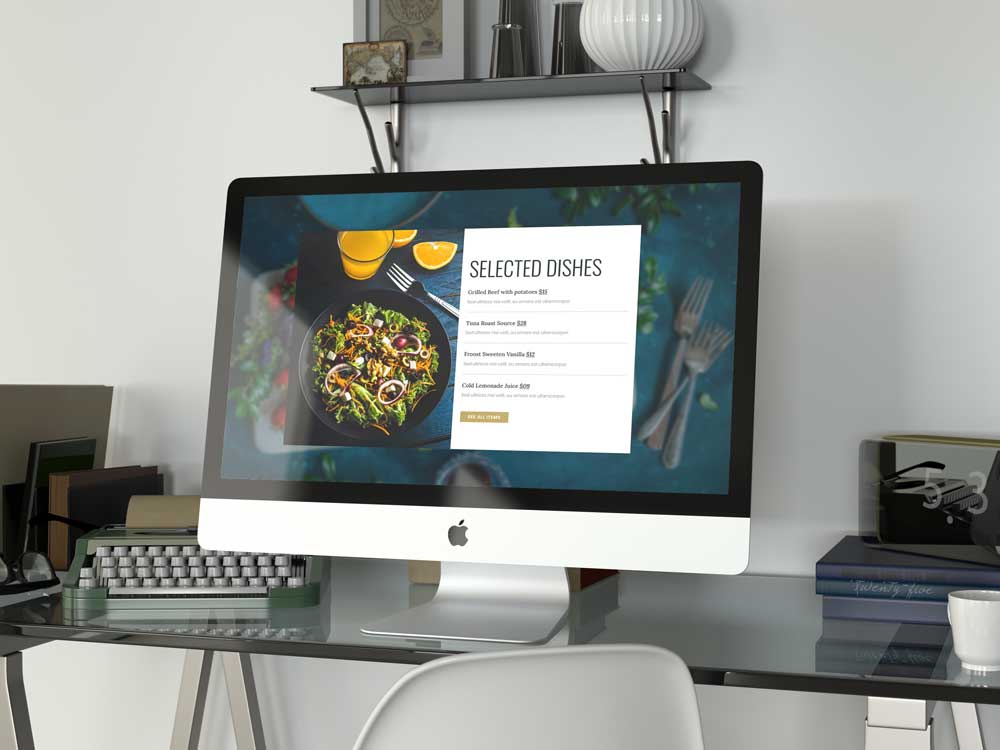
To avoid burnout, we need a balanced approach to wellness. It’s time to move away from strict diets and endless workouts. This article will show you how to make plans that fit your life’s changes. The goal is progress, not constant pressure.
Key Takeaways
- Sustainable health goals prioritize consistency over intensity.
- Burnout often comes from ignoring personal limits and needs.
- A balanced wellness approach includes rest, nutrition, and enjoyable movement.
- Small, manageable changes lead to lasting success.
- Recovery and flexibility are as important as exercise and diet.
Understanding the Cycle of Health Enthusiasm and Burnout
Health journeys start with excitement, but many hit setbacks. This section looks at why enthusiasm wanes and burnout occurs. We’ll explore patterns to find better paths.
Many start with health motivation strategies that feel too much. Over time, the wellness burnout cycle sets in, causing exhaustion. Here’s what leads to this cycle:
Why Initial Motivation Often Fades
- Novelty fades: New routines lose their “new” appeal, reducing drive.
- Unrealistic timelines: Expecting instant results clashes with slow progress.
- Social pressure: Comparing yourself to others’ achievements can dim your focus.
The Physical and Mental Cost of Health-Related Burnout
“Burnout isn’t a flaw—it’s a signal your approach needs adjustment.”
| Symptoms | Effects |
|---|---|
| Chronic fatigue | Reduced immunity, slower recovery |
| Emotional numbness | Loss of joy in once-enjoyed activities |
| Negative self-talk | “I’ll never succeed” mindset |
Identifying Your Personal Burnout Patterns
Ask yourself:
- When do I feel most drained by my health routine?
- What triggers all-or-nothing thinking?
- What small changes could improve motivation sustainability?
Tracking answers builds awareness of your unique wellness burnout cycle. Small adjustments today can prevent future burnout.
The Psychology Behind Sustainable Health Changes
Behavioral psychology reveals that lasting health changes begin with understanding how your brain forms routines. Small habits, like drinking water in the morning or stretching during TV, lay the groundwork for health habit formation. These actions become automatic when they fit into your daily life, not when forced.
“Habits never really disappear; the patterns just become automatic.” – Charles Duhigg, Author of The Power of Habit
Behavioral psychology offers several key principles:
- Habit Stacking: Link new habits to existing routines (e.g., meditate after morning coffee).
- Identity Shifts: Seeing yourself as “someone who exercises” helps stay consistent over time.
- Environmental Design: Keep workout clothes visible to cut down on decision fatigue.
| Concept | How It Works | Example |
|---|---|---|
| Implementation Intentions | Link actions to specific triggers | “After lunch, I’ll take a 5-minute walk.” |
| Intrinsic Motivation | Align goals with personal values | Choose yoga because it reduces stress, not just for appearance. |
These strategies use your brain’s love for ease and consistency. By making choices part of your environment and identity, health changes become natural, not a chore.
How to Achieve Your Health Goals Through Mindful Planning
Starting lasting health habits means using strategies that fit your life. Realistic health planning builds systems that adjust with your schedule. Here’s how to set goals that don’t feel like a burden.
Setting Realistic Expectations from Day One
- Use mindful goal setting to break big goals into smaller, weekly actions (like 15-minute walks instead of “exercise daily”).
- Keep track of your progress with a “success journal.” Celebrate small wins, like cooking one healthy meal a week.
Building a Flexible Health Roadmap
A flexible wellness goals framework includes:
| Goal | Milestones | Adjustment Options |
|---|---|---|
| Improved Sleep | Consistent bedtime routine | Adjust wake-up times on weekends |
| Hydration | Drink 40 oz daily | Use smaller cups if traveling |
Accounting for Life’s Inevitable Disruptions
Life is unpredictable—sick days, work demands, or family needs. Plan for flexibility by:
- Rescheduling workouts instead of skipping them.
- Having “maintenance mode” days during busy weeks.
“Rigid plans fail. Plans that bend with life succeed.”
The Power of Small Wins in Your Wellness Journey
Starting your health journey is all about small steps. Celebrating small wins, like a morning walk or a meal full of veggies, boosts your confidence. These small victories add up, leading to lasting changes when you celebrate them often.

Celebratinging Progress Over Perfection
It’s not about big milestones; it’s about the daily wins. Keep a journal of three small achievements each week. Research in Health Psychology found this boosts motivation by 35%.
Give yourself a treat, like a relaxing bath or a new workout playlist. This helps keep the positive habits going.
How Micro-Habits Build Long-Term Success
Micro-habits are tiny actions that feel easy. Try drinking water before meals, stretching while brushing your teeth, or standing for 5 minutes every hour. These small actions help create lasting routines.
Soon, tiny habits like flossing before bed become second nature. They lay the groundwork for bigger goals.
- Hydrate before every meal
- 30-second desk stretches
- Swap one sugary snack weekly
Creating Meaningful Milestones That Sustain Motivation
Choose milestones that truly excite you. For example, celebrate a week of good sleep with a new blanket, or a month of walking with a pair of comfy shoes. Seeing your progress on a calendar can be motivating.
Small health wins add up. Micro-habits turn into habits, and celebrating your progress makes the journey enjoyable. This approach helps you stay motivated and avoid burnout, making wellness a lasting part of your life.
Balancing Nutrition Goals Without Restrictive Dieting
Achieving balanced nutrition doesn’t mean strict rules or cutting out foods. Focus on non-restrictive eating with whole foods like veggies, grains, and lean proteins. Start with small changes, like adding spinach to eggs or choosing apple slices over chips. These small steps can lead to sustainable food habits without feeling overwhelmed.
“Nutrition isn’t about perfection—it’s about progress,” says registered dietitian Abbey Sharp. “Prioritize foods that fuel your body while leaving room for enjoyment.”
Try these simple shifts:
- Add nutrient-rich foods before removing “unhealthy” options
- Listen to hunger cues instead of counting calories
- Plan meals around 3 core groups: protein, fiber, and healthy fats
| Restrictive Approach | Non-Restrictive Approach |
|---|---|
| Bans “bad” foods | Includes all foods in moderation |
| Rigid meal timing | Flexible eating schedules |
| Focus on rules | Focus on body signals |
Small changes, like always carrying nuts or pre-chopping veggies, can make sustainable food habits easier. Enjoy meals that nourish your body without obsessing over every calorie. Remember, it’s the journey, not perfection, that leads to lasting change.
Movement That Energizes Rather Than Depletes
Forget grueling routines. mindful exercise starts with movement that feels like play. enjoyable physical activity could mean anything from swimming laps to salsa dancing—choosing what fuels your spirit matters as much as your muscles.
Science agrees: studies show low-intensity exercise boosts energy in 83% of participants. Even a 15-minute walk or gardening session triggers endorphins without exhaustion. Here’s how to build a routine that sticks:
Match Movement to Your Mood
- Try yoga flows for stress relief
- Join a community soccer league for social energy
- Pick hiking trails for nature connection
Low-Intensity Benefits Breakdown
| Activity Type | Energy Gain | Time Commitment |
|---|---|---|
| Walking | 23% increase in daily stamina | 20-30 mins |
| Gardening | 18% stress reduction | 15-45 mins |
| Swimming | Improved heart health | 25 mins+ |
Build Your sustainable fitness Blueprint
Alternate between active recovery days and short bursts. Example: – Monday: 20-minute bike ride – Wednesday: Dance party at home – Friday: Gentle stretching session
When exercise feels like a chore, motivation fades fast. Prioritize activities that make your body say “yes” instead of “have to.” Small, joyful movements compound into lifelong habits.
Rest and Recovery: The Missing Piece in Most Health Plans
Thinking you can do more by skipping rest is a myth. Your body needs rest and recovery to rebuild muscles, sharpen focus, and manage stress. Without it, even the best health plans fail due to exhaustion.
Why Sleep Should Be Your Top Health Priority
Sleep is like your body’s nightly update. Adults need 7-9 hours to process memories, repair cells, and stabilize mood. Here’s how to make sleep a slee priority:
- Stick to consistent bedtimes, even on weekends
- Dim screens 1 hour before bed to boost melatonin
- Use white noise or blackout curtains to create a calm space
Strategic Rest Days for Physical and Mental Recovery
Rest days are not laziness—they’re smart. Athletes use recovery strategies like these to stay strong:
| Activity | Why It Helps | How to Start |
|---|---|---|
| Yoga/stretching | Improves flexibility and circulation | Try 15 minutes of gentle poses post-workout |
| Active recovery | Light movement boosts healing | Swap intense workouts for walking or swimming |
| Complete rest | Resets nervous systems | Schedule 1-2 days weekly with no structured activity |
Mindfulness Practices That Combat Health-Related Stress
“Stress undermines even the healthiest habits,” says Dr. Sarah Lee, a sleep specialist. “Mindfulness interrupts that cycle.”
Try these quick techniques to recharge:
- 4-7-8 breathing: Inhale 4s, hold 7s, exhale 8s to calm nerves
- Body scans: Lie quietly, mentally scanning each body part to release tension
- Gratitude journaling: Write 3 small wins daily to shift focus from pressure to progress
Your journey isn’t about constant effort—it’s about balance. Prioritize rest as part of the plan, not an afterthought.
Building Your Support System for Long-Term Success
Having a strong support system is key to reaching your goals. Finding people to hold you accountable, like friends or online groups, can really help. Studies show that 76% of people with support partners reach their goals longer than those without.
- Join local fitness classes or online communities focused on community wellness.
- Use apps like MyFitnessPal or Strava to share progress with trusted contacts.
- Communicate your goals clearly to family to gain their support.
| Type | Example | Benefits |
|---|---|---|
| Accountability Partners | Weekly check-ins with a coworker | Keeps you on track through regular feedback |
| Community Wellness Groups | Local running clubs or Instagram challenges | Shared goals boost consistency |
| Professional Guidance | Nutritionist consultations | Expert advice tailored to your needs |
“Alone we can do so little; together we can do so much.” — Helen Keller
It’s important to protect your journey by setting boundaries. Say no to things that might get in the way, like late-night snacks. Choose groups that celebrate small victories, not perfection. The American Psychological Association found that social connections can boost sticking to health plans by 35%. Building these networks is essential for lasting change.
Technology Tools That Support Rather Than Overwhelm
Modern technology for health offers tools to simplify wellness without adding stress. The right apps and devices can guide progress without turning goals into rigid rules. Choose tools designed to encourage balance, not control.
Apps That Promote Balance Over Obsession
Pick apps focused on gentle guidance. Digital wellness tools like Headspace (mindfulness) or Strides (step tracking) prioritize consistency over perfection. Avoid calorie-counting apps that fixate on numbers—instead, use platforms like Daylio to log moods or activities without pressure.
Using Data Mindfully to Track Progress
Mindful tracking means focusing on trends, not daily swings. Track only 1–2 metrics weekly, like sleep hours or hydration. Tools like Apple Health let you view weekly averages, helping avoid fixation on daily data. Remember: a single off-day doesn’t undo progress.
Digital Boundaries for Health Goal Sanity
- Set app limits via device settings (e.g., iOS Screen Time)
- Mute notifications for non-urgent alerts
- Choose offline hours—no health app checks after bedtime
Setting boundaries helps you stay focused. Tools like Forest (focus timer) or Google Fit’s weekly summaries help keep your tech use on track.
Conclusion: Embracing the Marathon of Wellness, Not the Sprint
Starting a lifelong health journey is key to lasting wellness. A holistic approach helps you adapt to life’s ups and downs. Celebrating small victories and choosing fun activities keeps you moving forward.
Don’t worry about setbacks or plateaus. They’re just part of the journey. Being flexible, like changing your workout or using apps to track progress, is important. Remember, rest, sleep, and support from friends and family are crucial for staying strong.
It’s all about being consistent, not perfect. Every small action, like a short walk or eating mindfully, adds up. Embrace the slow and steady approach. It’s the best way to achieve lasting health and happiness.
FAQ
What are some sustainable ways to achieve my health goals?
To reach your health goals, plan mindfully and celebrate small victories. Focus on balanced nutrition. Choose small, consistent actions that fit your values.
How can I avoid burnout while pursuing health and fitness?
Set realistic goals and make a flexible health plan. Enjoy your workouts and take rest days. This keeps you going in the long run.
What role does nutrition play in sustainable health practices?
Nutrition should be about adding good foods, not cutting out bad ones. Listen to your hunger and find flexible eating plans. This avoids diet fatigue.
Why is rest and recovery so important for health goals?
Rest helps your body and mind recover. It keeps you energized and motivated. Make sure to sleep well and take rest days.
How can I build a support system for my health journey?
A supportive network is key. Look for accountability partners and join groups with similar goals. Share your goals with loved ones for a strong support system.
What technology can help me achieve my health goals without feeling overwhelmed?
Choose apps that support a balanced health approach. Set digital limits to avoid too much health info. This keeps you focused.
How can I create a fitness routine that I enjoy?
Try different activities that fit your style. Find fun exercises and include low-intensity ones. This makes your fitness routine enjoyable and sustainable.
What are micro-habits, and how do they contribute to health success?
Micro-habits are small actions that improve health over time. They help you build a strong health foundation without feeling overwhelmed.
How do I navigate social situations while maintaining my health goals?
Share your health goals with others and find supportive friends. Prepare for social events to stay on track with your health goals.
How do I maintain motivation in my health journey?
Celebrate every small success. Set personal milestones and journal your progress. Focus on the journey and the joy of small wins to stay motivated.




Pingback: H-H10 Healthy Eating Tips For A Better Lifestyle